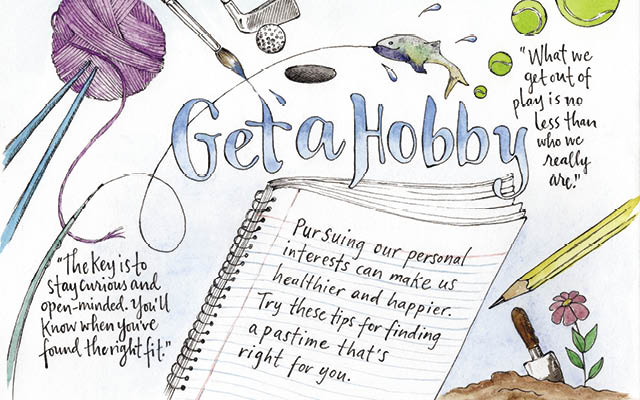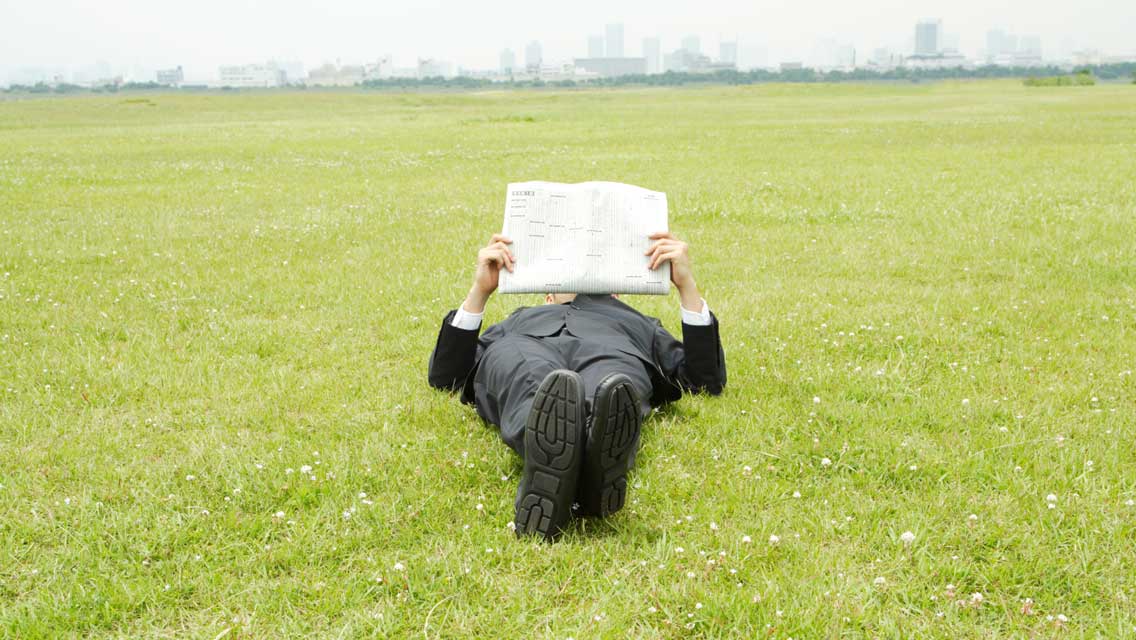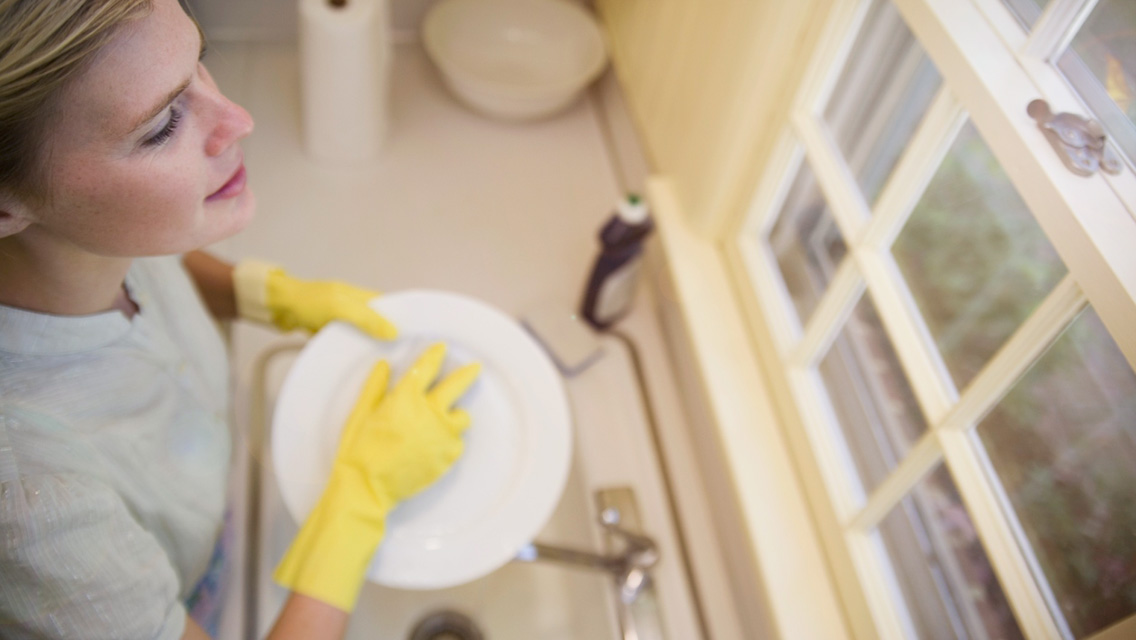It’s no secret that ours is a culture of doing. From Max Weber’s The Protestant Ethic and the Spirit of Capitalism to Donald Trump’s The Apprentice, Americans are told that in order to get anywhere, we must always be striving, working, pushing our way through the barriers standing between our reality and our dreams.
But what if we stopped for a moment, took a deep breath and, instead of doing, just spent some time not doing? What if we embraced a new ethic in which we subtract from, rather than add to, our daily grind?
While there are certainly some who might perceive this notion as a recipe for economic collapse and cultural ruin, there is also ample evidence to suggest that doing nothing on a regular basis can actually inspire greater creativity and lead to a more productive life.
Western culture, for instance, is replete with tales of brilliant daydreamers like Frankenstein-creator Mary Shelley, poet Samuel Taylor Coleridge, Alice’s Adventures in Wonderland writer Lewis Carroll — even J. K. Rowling, whose Harry Potter novels came to her in a moment of reverie on a train ride from Manchester to London. For these and other famous slackers, the ordinary daydream was a tool that sparked bursts of creativity. As author Tom Hodgkinson puts it in his book How to Be Idle, “Dreamland is the original cyberspace, our own built-in, spiritual virtual reality. Our dreams take us into other worlds, alternative realities that help us make sense of day-to-day life.”
Not given to daydreaming? No problem. There are plenty of other ways to clear the mind and do nothing — from taking things out of your busy schedule to simply turning off the TV and embracing silence — that can help you recharge your batteries and reach new levels of inspiration.
Turning Nothing Into Something
My wife, Sharon, is a copyeditor who spends a good deal of time staring at her computer screen each day. She’s a diligent worker, but every day without fail, she takes an hour or two away from her office to sit at a local coffee shop. There, she’ll do the day’s Sudoku puzzle, sketch a nearby flower or just stare into space. When she returns, she’s not only refreshed, but also inspired. She’ll often jot down a number of ideas for new projects or strategies for tackling old ones.
It’s a little like detoxifying the mind, says St. Paul, Minn.–based life coach Laurie Phillips. “Doing nothing is a way of flushing the old stuff out so the new stuff can come in,” she says. “It’s like a cup of tea. If the cup is full, you can’t put any more into it.”
“Doing nothing is a way of flushing the old stuff out so the new stuff can come in. It’s like a cup of tea. If the cup is full, you can’t put any more into it.”
What’s more, doing nothing can help reset the mind’s internal workings and affect physiological reactions. Scientific studies dating back to the 1970s have shown that certain states of not doing, such as meditation, can reduce heart and breathing rates. Today, ongoing, high-profile collaborations between the Dalai Lama and Western academic institutions such as MIT, for example, are delving into how meditative states can positively influence neurological activity and human perception.
Getting into a state of not doing isn’t always easy, Phillips warns, because, “If we stop the noise, we’re afraid we’ll find out that we’re empty.” But she suggests that we can get started doing nothing in several relatively simple ways, like sitting still and being silent for just a few minutes every day, or taking an occasional “media fast” (turning off the TV and radio, or setting aside the newspaper for a few days). Phillips also recommends embracing the siesta culture popular in many warmer climes — even if you can only do it on weekends. Taking some afternoon downtime, she explains, “respects the body’s rhythms,” and also offers the mind a much-needed retreat from its usual nonstop problem-solving activities. The result? You clear out mental room for the very inspiration and perspective you might need so as to make some problems a thing of the past.
Taking some afternoon downtime “respects the body’s rhythms,” and also offers the mind a much-needed retreat from its usual nonstop problem-solving activities.
If you can really get away — taking a real retreat for a week or more — the opportunities for healing, renewal and inspiration multiply. “How rare are those moments in our lives that are not filled with projects, lists and tasks to be finished,” writes Christina Feldman in her book Silence: How to Find Inner Peace in a Busy World. “You might find, in that silent space, that your body begins to soften, and there is an enhanced awareness in how you see, hear and feel.”
Such an emptying out of distractions can be both clarifying and liberating, Feldman notes, but it can also be disconcerting: “Whenever we undertake periods of silence and contemplation, we leave behind the familiar territory of our routines, habits and the various ways we order our world. Taking that step into uncharted territory, we leave behind not only the familiar structures of our life, but also the reassurance and consolation we draw from them.”
If we can put our discomfort with unfamiliarity aside, though, such practices have the power to lift us out of our slap-dash approach to living. And they may even improve our health. At the University of Minnesota, the Center for Spirituality and Healing’s Mindfulness Based Stress Reduction (MBSR) program has helped people deal more effectively with illnesses and stress and put them on a path to healthier lives. “Our culture is such a busy culture, we think we always need to be doing something,” says instructor Terry Pearson. “The program helps people quiet their minds and listen to what their bodies need.”
The Rewards of Not Doing
It may be in this — simply listening and responding to our own most essential needs and desires — that the greatest opportunity for inspiration exists.
When we take time out of our busy schedules to just be — whether for a few seconds or an hour — instead of do, we have the opportunity to pay attention to our deepest desires and dreams, and to let them inspire us. And feeling inspired is a cornerstone of setting and achieving goals, reaching new creative heights, and living a more deeply satisfying life.
Practicing doing nothing is a worthy endeavor. The serenity, clarity and inspiration it can bring is a rich and irreplaceable reward.
When Less is More
While a daily “do nothing” practice offers many rich rewards, there are also some specific circumstances where courting simplicity and eliminating distraction can be particularly valuable, says St. Paul, Minn.–based life coach Laurie Phillips. For example:
The Big Transition. Whether you’re preparing to embark on a major life change or you’re recovering from one, taking the time to be alone and meditate can help quiet the voices of judgment in your head and help you sift through the irrational and nebulous fears such a big change can bring. It’s important, Phillips says, to understand, “What is the story you’re making up about this?” With a quieted mind, you have the opportunity to draft the story — and happy ending — of your choice.
Too Much at Once. You’ve been piling on responsibilities until you’ve finally reached the breaking point. You’re harried to the point of paralysis and pulled in every direction — except toward a creative solution. Phillips suggests a little “imagination break.” Keep a favorite photo at your desk and lose yourself inside it from time to time, or simply get up and walk outside. Put your eyes on the clouds or the horizon line and allow your mind to empty itself of clutter.
Never Enough. With the family budget stretched to its limits, you’re consumed by anxiety. Create a few moments of stillness and silence in which you can reflect on the things you do have. When you carve out time to be still and focused, you’re able to focus on your blessings — and your anxieties begin to abate.
This article originally appeared as “The Art of Doing Nothing.”




This Post Has 0 Comments